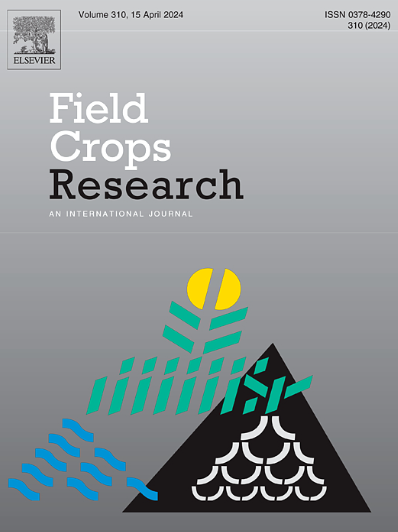Better root length distribution in the deep soil profile enhances upland cotton performance
IF 5.6
1区 农林科学
Q1 AGRONOMY
引用次数: 0
Abstract
Intense selection for lint yield and fiber quality traits can impose an unintended limitation on the attainable yield of modern cotton cultivars, as the root systems fail to support boll growth. Despite the importance, little progress has been made in enhancing cotton root systems. We evaluated a subset of the U.S. cotton diversity panel under field conditions in 2022 and 2023 to identify the root architectural traits that enhance effective water use and aboveground performance. We found that increased water use efficiency (WUE, shoot biomass/soil water depletion) of the cotton genotypes was associated with enhanced shoot biomass (correlation coefficient, r, 0.80 in 2022 and 0.96 in 2023). Potential root phenotypes that enhanced resource capture and shoot biomass production were better root length distribution in deep soil profile (∼40–60 cm) and fine root (0.25–0.5 mm diameter) production. Shoot biomass was correlated with root length in the deep profile (r, 0.69 in 2022 and 0.45 in 2023) but not in the shallower profile (<40 cm). Root length in the deep profile was also correlated with WUE in the dryer year 2022 (r, 0.45). The cotton root system was dominated by fine roots (46–66 % in 2022 and 53–62 % in 2023). Genotypes Station Miller, Paymaster HS26, and PD 2164 possessed beneficial root architecture which was linked to their high shoot biomass, leaf area index, WUE, and seed cotton yield. These genotypes can be used as germplasm sources for improved root traits and to study their genetic regulation.
求助全文
约1分钟内获得全文
求助全文
来源期刊

Field Crops Research
农林科学-农艺学
CiteScore
9.60
自引率
12.10%
发文量
307
审稿时长
46 days
期刊介绍:
Field Crops Research is an international journal publishing scientific articles on:
√ experimental and modelling research at field, farm and landscape levels
on temperate and tropical crops and cropping systems,
with a focus on crop ecology and physiology, agronomy, and plant genetics and breeding.
 求助内容:
求助内容: 应助结果提醒方式:
应助结果提醒方式:


